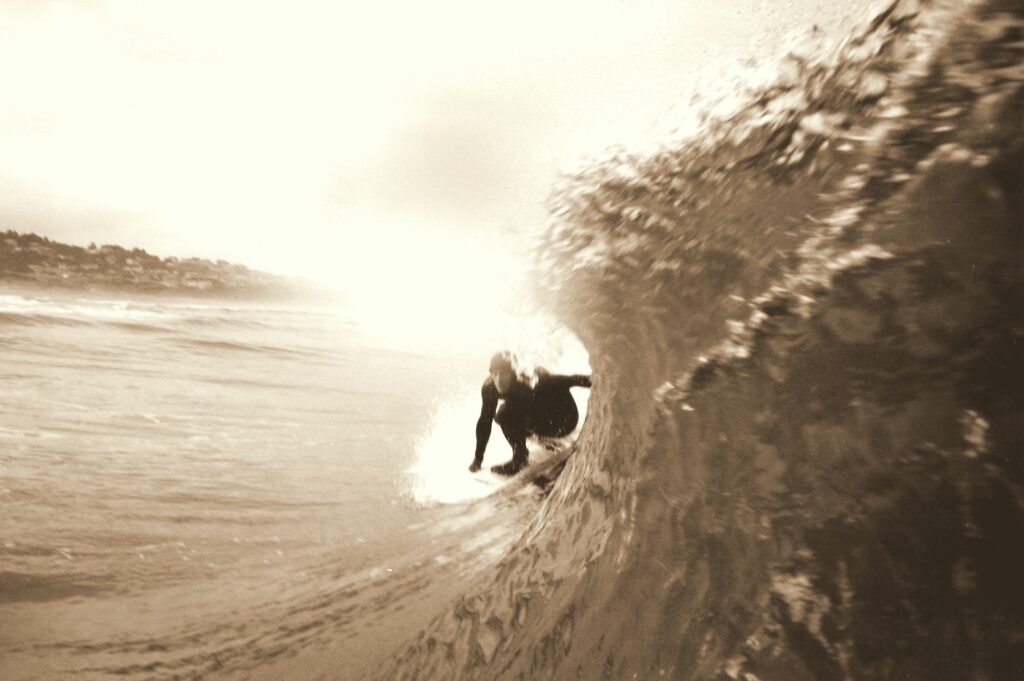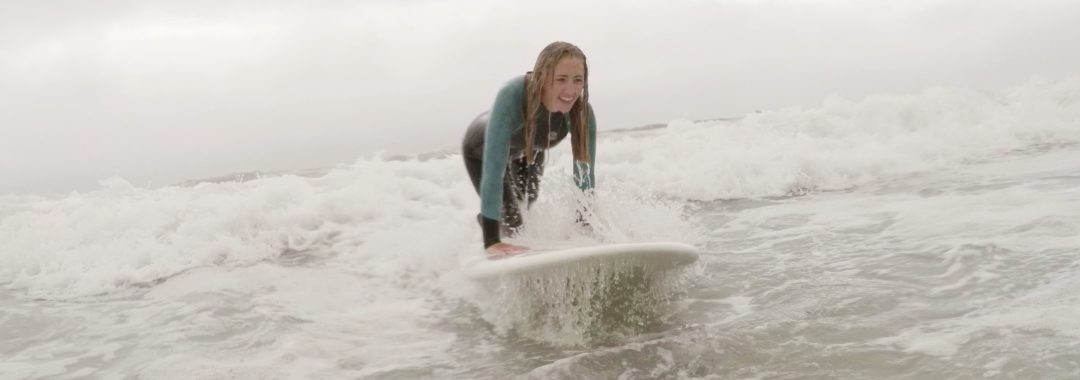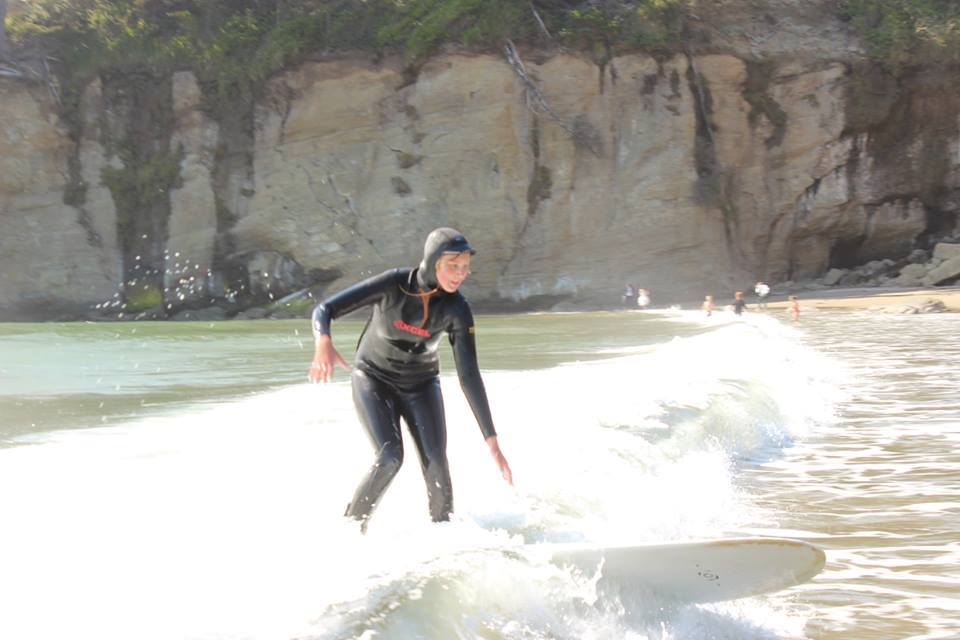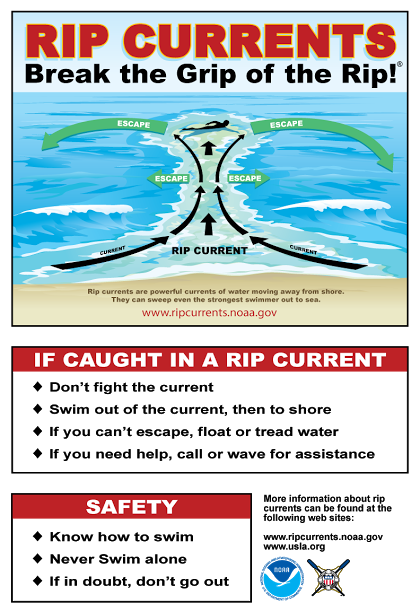Want to Learn How To Surf? 10 Things You Should Know Before You Start!
1. Choose the right surfboard & wetsuit!
2. Go to the right spot.
3. Go surfing on the right day.
4. Know what rip currents are and how to get out of them.
5. Know about localism.
6. Know how to catch a wave.
7. Learn how to stand up on your surfboard.
8. Learn how to make it outside (beyond the breaking waves into the green water). According to your ability and when you’re ready.
9. Know some of the unwritten rules of the line up.
10. Have fun surfing is a blast!
If you want to learn to surf. Follow our list of 10 things to know before you go.
1. Choose the right surfboard & wetsuit
You don’t want to start on a thin high performance short board, or any short board for that matter. When you are learning to surf you need to start on a surfboard that has some width, thickness, and volume to it. Yes a longboard. How long depends on a how big you are, the bigger the person the bigger the board should be. Think of it in steps. If you don’t want to be a longboarder that’s okay, but you will get better a lot faster if you use the long board as a tool to get the basics down. You can then scale down in size as you progress.
A short board is super unstable and there is way too much going on out there when you are first learning to have the added difficulty of an unstable board. Start on a big board and you will learn faster, ride more waves, ride the waves you do catch further, and have more fun!
Along with the right surfboard is the right wetsuit. Unless you happen to live in a tropical area where a wetsuit is not needed. You will want to check with your local surf shop about the right wetsuit thickness for your area. Your average water temperature will determine what wetsuit thickness you should purchase or rent. You can also ask the local surfers what they wear.
2. Go to the right spot!
When you are learning you want to go to a beginner friendly surf spot. If you do not know of one ask your local surf shop where the beginner friendly spots are. I would even call the good surf shops in your area before you go for a daily surf check. The weather conditions can change a beginner friendly spot into a dangerous spot very quickly. Stay away from heavy shore break beaches, reef breaks, point breaks. You want a mellow sandy bottom spot with slow peeling mushy waves, and not too many people out. You want to learn to surf, not get beat up, held down, and thrashed around. Do your homework and this can make the difference in having a good first experience or a bad one!
3. Go surfing on the right day!
As mentioned above every day is different, so you need to respect the ocean. It may be your first day off in a month, but the current conditions are 14′ W swells @ 13 seconds. Unless you are surfing a protected cove that is blocking most of that swell and does not have rip currents, you should wait for a better day! You want to be safe. When the surf is big there’s a lot more water moving around, rip currents are usually stronger, it is a lot more dangerous, as well as difficult to learn because you are fighting just being out there. Again check with your local surf shop, or check your local surf report. Some surf shops have a surf report right on their websites.
4. Know what rip currents are and how to get out of them.
A Rip Current is a strong narrow channel of water heading from near shore back out to sea. Returning the water seaward that is pushed in from the waves, wind, and the tide.
If you get caught in a rip current, don’t panic, it wastes energy. Do not paddle directly against it, you will get exhausted. You want to paddle parallel to the shore where you see the waves pushing in toward the beach, to get out of a rip current.
Most rip currents are not very wide, so by paddling parallel to shore you should be able to paddle out of the rip current. Once out of the rip paddle toward the waves pushing toward shore and paddle back in diagonal away from the rip current back toward shore.
Remain calm, you want to be able to hold your breath at any given time while out in the ocean. You never know when a wave could break on you, or in front of you. You will not be able to hold your breath very long while panicking, so remember to stay calm and work with the ocean not against it.
Sometimes (with strong rip currents) you may have to go out with the rip into deeper water, where the balance is restored and the pulling current subsides. You then can paddle parallel to shore and work your way in. Remember do not fight the ocean, try to work with it. The ocean is bigger than all of us.
Signs of a Rip Current:
- Waves not fully breaking in the rip (usually deeper in the rip because it is a channel for water to head seaward) and the water seems to be choppy and headed back out to sea.
- You may see objects or other surfers being pulled out to sea rapidly with little or no effort.
- A change in water color within the rip. It may be murkier from sediment, or greener from depth.
- Sometimes you will not see the signs of a rip current and still get caught in one. Knowing what to do if you are caught in a rip current can save your life!
- It’s always safer to bring another surfer and never surf alone. You or your surf partner could get help if one of you gets in trouble. It’s also fun to share the stoke of surfing with a friend!
More Info on rip currents here.
5. Know a little about localism.
Like with life, or even driving on the freeway, surfing can have its dark side! Surfers that surf the same spots a lot start to feel like that spot is theirs. They like to take a sense of ownership of the spot, and feel like they should get all, or most of the waves out there.
New surfers who show up are considered intruders. Localism may show itself as someone yelling at you, dropping in on you, flattening your tires, waxing your windshield, or even picking a fight with you.
- What can you do about it?
- Be respectful to the locals. If you are a beginner you probably should not surf the same spots as the locals until your skill level improves. You will most likely just get in their way and give yourself and the locals a bad experience.
- When you are ready to surf with them just try to be nice and give them respect. You will find that most of the locals are regular guys and gals who when treated nicely, and with respect will respond in the same way (Yes, I know there are exceptions).
- Do not show up with a big crowd of people to the local hot spot. The locals will not be happy with you, and you will most likely get a negative vibe at the least.
- If there are several surfers on a peak and you and your friends show up to go surfing. It is usually better to paddle out down the beach and wait for the crowd to thin. Let them have the peak that they were on first, and do not invade them.
- Get to know the locals and you may gain a friend and a surfing buddy! They are not all bad!
- Well I could go on, but I think you get the point! Do to others as you would want them to do to you!
6. Learn how to catch a wave.
Well to start with, in the white water (already broken waves) you will want to catch your first few waves in a prone position (laying down). You can point your board toward the beach and when the white water hits you jump on the board prone and ride it in toward the shore laying down practicing turning a little. After you get that down you can practice paddling to catch the wave. To paddle you need to dig down deep and really try to stay smooth and keep the board in a planing position. Do not be to far back on the board as you will push water. This is harder and you now should know how to get up on your board now. See #7.
7. Learn how to stand up on your surfboard.
Before even going to the beach practice doing pop ups. Lay down on the floor with your hands near your chest but not so wide, like a norrow push up. Your board is only so wide and you want to be able to push off your board to get up to your feet in one smooth motion. Practice going from laying down to popping up to your feet and turning side ways in a surfers stance. Jump back down to a prone position and try to repeat until you can do like 10 of these pop ups without stopping. Remember it will be harder in the ocean because you will be moving and the water is moving, your board is not as stable as the floor, and things are more difficult while sliding down the face of a wave. You do not want to go to your knees. This is a bad habit and makes things much more difficult. You will make your first experience surfing much better if you get this down before you ever enter the water! Remember stay off your knees
8. Know how to make it outside (beyond the breaking waves into the green water). According to your ability and only when you are ready.
Look for a channel, or a spot that the waves do not seem to break in, and maybe the water is murkier and deeper. Hey that sounds like a rip current. Don’t I want to stay away from those? If they make you uncomfortable, yes by all means stay away from them. Do experienced surfers use the rips, and channels to get out into the line up? Yes surfers do work with the ocean and do use rips, and channels to get out into the line up easier, and quicker. When you work with the ocean the rip can help you to get out beyond the breaking waves easier.
It is still important that you remember your limits. Did you check the surf report? Do you know how big the swell is? Are you in good enough shape to handle the current conditions and swell size? Are you a good enough swimmer to make it back to shore with the current conditions if you lost your board?
All important factors to think about. With a longboard it can be difficult to make it outside if there’s a lot of white water to battle, and without a channel or a rip to help you make it out the back.
You can paddle at the white water and before it hits you slide off your board and turn your board over, holding on to the rails, and pulling the board downward as the wave sweeps over you. You will need to turn your board back over quickly and start paddling before the next wave or white water hits you. With perseverance you can make it outside depending on how big of a day it is and how much white water you have to deal with, and how strong and determined you are. This is called turning turtle. Short boarders can duck dive, but this is a beginners article, so we are not going there.
9. Know some of the rules of the line up.
1. The #1 rule in surfing is that the surfer closest to the curl has priority. If you are on the shoulder of the wave and someone else is deeper (closer to where the wave is starting to break), they have priority. Always look before you take off on the wave. Beginners are notorious for just paddling into a wave unaware that someone else already has the wave and has priority. I try to stay away from beginners for this reason as I do not want to get in a collision with anyone while I am surfing. I just figure they will learn. Sometimes that means they may get into a collision, or get yelled at, or at the worst get into a fight. It’s better to be aware of others and know the rules before any of this happens.
2. When you are paddling back out it is your responsibility to stay out of the surfers way who are riding the waves. That may mean you have to paddle wide of the take off area and then back into the take off position. You do not want to be in anybody’s way. If you do find yourself in a surfers way who is riding a wave, pick a direction and continue to go that way as changing directions at the last second makes it hard on the surfer riding the wave to steer around you! The surfer riding the wave also has to be the one to prevent the collision because they can turn to avoid you if they are already up and riding, but sometimes that means you will be wrecking their wave that they may have been waiting for. Anyway they will not be happy. If this happens to you try to apologize, and paddle wide the next time.
It’s also best to give the surfer the shoulder and let them have the open face of the wave even if it means you getting worked by the breaking wave.
3. Don’t be a wave hog! If you just caught a wave and then you paddle back outside deeper than everyone else so you are now in position to have priority and you keep doing this over and over the other surfers will not be happy with you! It is better to give a wave than always take a wave. Yes I understand that sometimes beginners do not paddle into the take off spot, and therefore never really get any waves. The better surfers usually get more waves because they know where to be and have the ability to take off in the critical part of the wave. As you get better you will learn where you want to be, and catch more waves, and hopefully give a few waves to some beginners. Remember we were all beginners to start with.
Beginners should try to find a spot where there are not a lot of other people out, so they can catch lots of waves, and learn to surf faster and have more fun without the negative vibe!
10.Have fun surfing is a blast!
Do not get discouraged or expect to much of yourself to early. Surfing takes time to get any good at, but is still fun while you are learning! Try to have fun and enjoy yourself.
There is no other sport like surfing! I hope this article helps to make your first surfing experience a great one! I started surfing when I was 12 years old and was hooked after my first session. I’ve now been surfing over 40 years and still get stoked like a 12 year old grom!



